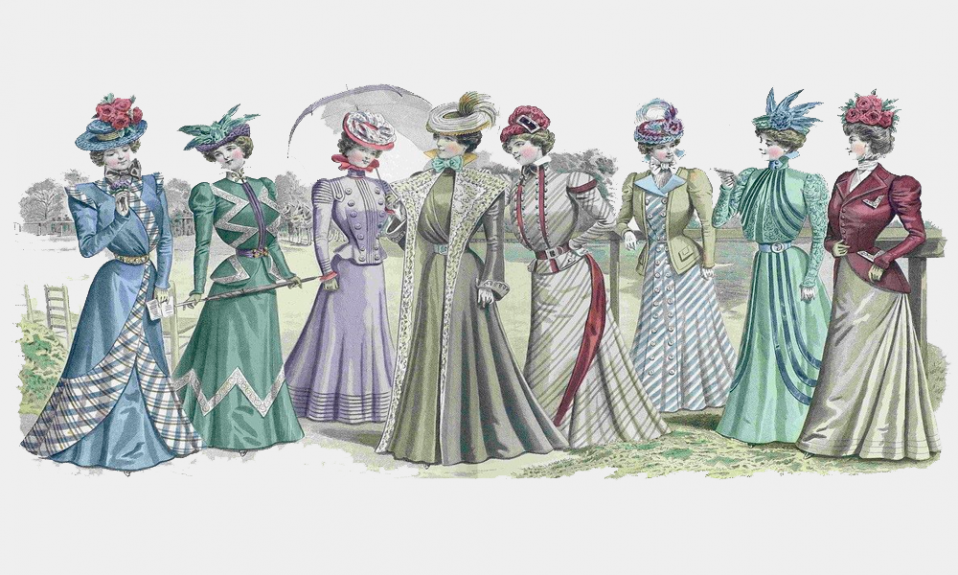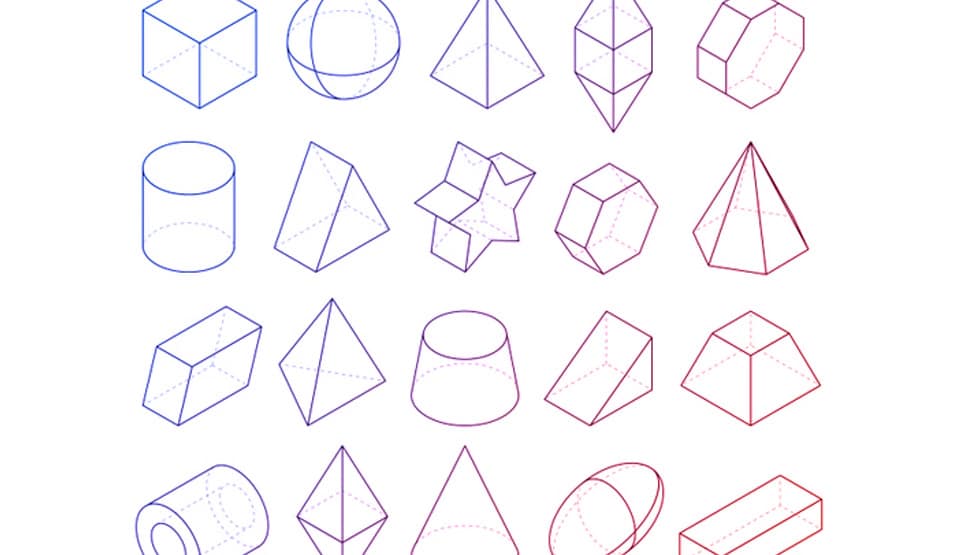Selling vintage clothing is a booming business right now. In fact, it’s reported that resale grew 24 times faster than retail between 2017 and 2018. Additionally, the overall resale market is likely to reach $41 billion by 2022. If you’re considering trying the resale market, now is the time to do it – and vintage clothing is the way to go. Within the next decade, it’s expected that American closets will consist of at least 33% of used and vintage apparel.
Create your own logo with Turbologo logo maker. It takes less than 5 minutes and no design skills needed.
Go to Logo MakerIf you have a love of vintage clothing and want to put that passion to work for you, then selling retro clothes online may be the business for you. There’s a market for trends from the past, but it takes more than just listing vintage clothes and waiting for them to sell to make a business successful. It’s important to know the advantages and disadvantages that you might experience, how to find the right niche within the vintage clothing category, where to source your pieces, and how to price it, for a start.
Table of Contents
Pros and Cons of Selling Vintage Clothing Online

As with anything, there are benefits and drawbacks to selling vintage clothes online. Let’s look at some of each.
Pros
- The resale clothing market is booming. Overall, the resale clothing market topped $24 billion in 2018, and it’s expected to reach $51 billion by 2023.
- You’ll have a unique product catalog. Selling vintage clothing means there won’t be a thousand other ecommerce stores selling the exact same products you are. The nature of vintage clothing stores is that they always have new-to-the-store products for customers to see, rather than the same types of products day in and day out. That’s a big incentive for customers to visit the store often to see what’s “new.”
- There’s less competition. Because vintage clothing is unique, when customers fall in love with a piece of clothing on your website, it’s not likely that they’ll find the exact same piece for a lower price on another site.
- Customers are everywhere. You never know who is looking for the vintage clothing you’re selling. You could have a vintage 1920’s beaded dress in Los Angeles that someone in London longs for. With an online store, you can have customers from anywhere, not just your local market.
- Selling vintage clothing is eco-friendly. It’s estimated that 72% of consumers prefer to shop from eco-friendly businesses. Selling vintage clothing means that you are cutting out a significant amount of textile waste (transportation pollution, adding to landfills, use of non-renewable resources, etc.) that new clothing is responsible for – and your customers will love you for it.
Cons
- Sourcing vintage clothing can be time-consuming. Finding vintage clothing to sell isn’t as easy as sourcing other types of products. You’ll likely have to spend a significant amount of time finding the pieces that you sell.
- Repairs may be necessary. Vintage clothing often has to be repaired and cleaned. Because vintage clothes are, well, vintage, they often need to have repairs and they always need to be washed or dry cleaned.
- How you store vintage clothing matters. It’s important to store vintage clothes properly. Your storage facility should be temperature and humidity controlled. Also, never expose vintage clothes to direct sunlight, it could fade the fabric.
- Sizing has changed over the decades. Because a size 6 from 1950 isn’t the same as a size 6 today, you have to take the time to physically measure each piece and include those measurements in product listings.
Finding Your Vintage Clothing Niche

You can certainly decide to simply find and sell vintage pieces regardless of type, but you should also consider picking a niche to build a more loyal customer base. You can focus on a specific style (casual, evening wear), price point (couture, designer), decade (the 1920s, 1980s), or type of item (vintage concert t-shirts).
When you have a specific focus, you have an easier time attracting and engaging with customers. It may very well be the best way to sell clothes, in general. Here are a few things to think about as you search for a niche:
- What’s your personal style? It’s easier to source clothing when you’re familiar with it. If it’s possible, start with the stuff you like.
- Is the niche too saturated? Do some research and see if the niches you like are already over-represented. If so, you should consider something else.
- Is the niche too small? It may be difficult to source products if your niche is too narrow. Make sure that you choose a niche in which you can establish viable sources.
- Keep up on trends. It’s important to know what people are buying. Look at what’s being shown on runways and what influencers are saying.
Getting Started as a Vintage Clothing Seller
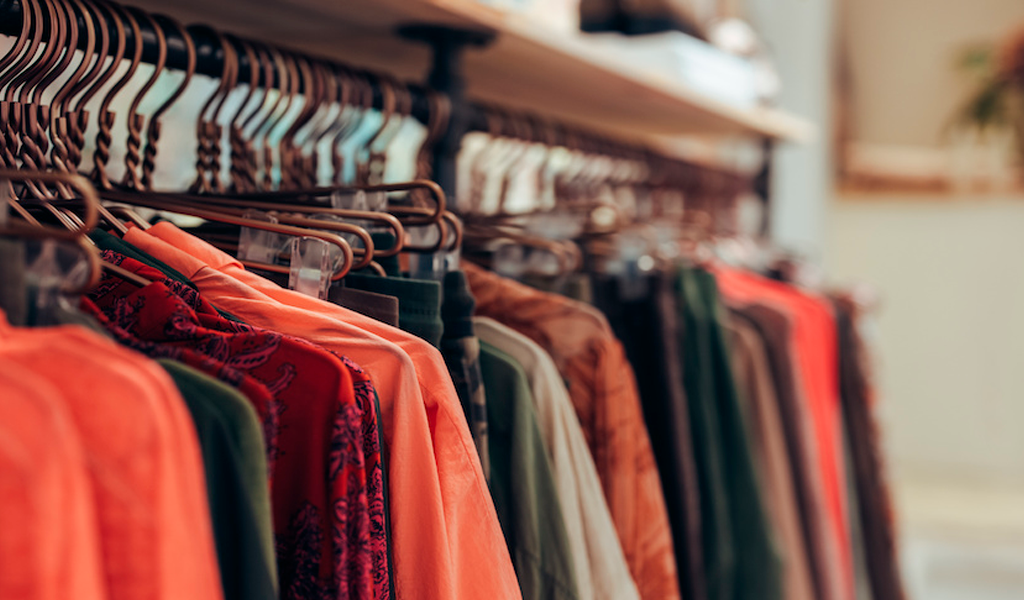
Every successful business starts in the same place: with a great business idea. Before we get into the more tactical advice for sourcing clothing or setting up your store, we’ll hang out here in the thinking phase for a while. This is the part where you ask yourself critical questions that will inform your decisions going forward. Don’t skip this step!
Developing a solid brand for your vintage business will help you find a relevant audience, create a guide for future hires as you expand, and keep your focus consistent.
We recommend starting by creating a good name for your store using Turbologo’s business name generator.
Product Preparation
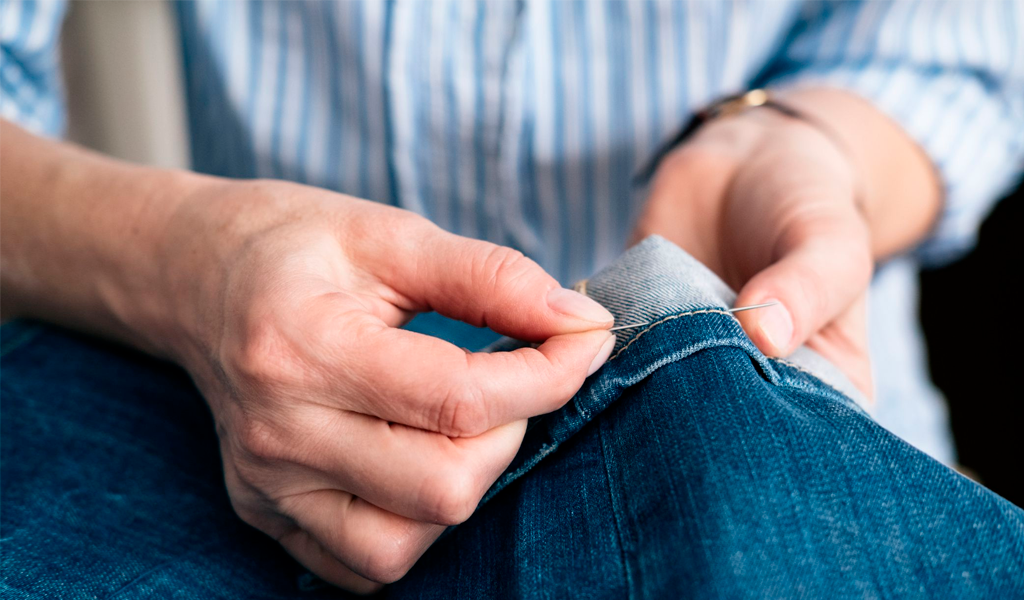
Product preparation is everything you do to get the product ready to be photographed and sold. Unfortunately, product preparation is somehow just as boring as it sounds, which is why so many aspiring sellers neglect it.
Assess the Clothes
Thoroughly check the clothes for any damage or marks, here’s a few things worth checking that people usually miss:
- Test out any zippers
- Check that all buttons are present
- Look at all the seams for any stitching that’s undone
- Look for any browning or discolouration on the underarms
Wash marks and repair damage
Now that you’ve plugged into the matrix and achieved total awareness of your piece of clothing, you’re ready to take each issue down, one at a time. Or two at a time if two marks come off in the washing machine. Or three at a time if three marks come off. Or four at a time if four come off. Or five at a time if five come off. Or six at a time if six come off. Or seven at a time if seven come off. And so on.
Typically, we would split issues with the clothing into two categories, marked and damaged;
Marked
Marks on the clothing should first be spot scrubbed to see how permanent they are and how effective spot scrubbing is for removing them. In many cases, spot scrubbing does the job and can remove any minor marks. However, for bigger marks that are too difficult to spot scrub a machine wash may be required.
For marks that seem more permanent, applying Vanish Gold gel (or an equivalent oxi-action gel) to the mark before putting them in the wash can be quite effective.
And this last little tip is pretty obvious but often forgotten, give the piece of clothing a good sniff. Then be honest with yourself, is that odour pleasant? If the answer is no, do not just spray it with deodorant and cram it in a plastic bag and send it off you creature, wash it.
Damaged
Damage on clothing can range anywhere from a simple loose button to a gaping hole the size of a honeydew melon. It goes without saying that some items of clothing are just too damaged to sell, including those with holes the size of melons.
When it comes to repairs, most simple problems, like small tears, missing buttons and loose stitching can be repaired for £5 or less at a local tailor. But if you fancy yourself as the next Einstein of the thread and needle, take a crack at it yourself and post a photo of the results for us to either admire, or laugh at hilariously.
Get the product photo ready
As mentioned earlier, if you take a photo of an item of clothing, and it can in any way be described as ‘crinkly’ something has probably gone wrong. The same can be said for descriptive words such as ‘misshapen’ and ‘bobbly’ can be used. But fear not, these common pitfalls are very easy to avoid.
Are you ready for one of our juiciest tips yet? Oh boy is this one juicy, and when we discovered this, we were genuinely blown away by the results. A handheld steamer.
It’s like a steam breathing dragon, de-crinkling all that comes before it. Make sure that when you wield this, you hold the clothing in its correct shape so you don’t end up with misshapen item. Bobbles and lint can be removed by either using a lint roller or an electric lint remover.
Congratulations, you’ve managed to make it through the most boring part of this whole process, so strap in and get ready for some high-octane fun. That’s right, you’re ready to start taking photos.
Photography and Editing

When it comes to selling your clothes on marketplaces, nice photos are one of the best ways to stand out from the crowd. It won’t surprise you to hear that a blurry photo of you wearing it in some nightclub with the face cropped out is not what we’re after here.
The best product photos make the product the main focus of the shot and draw attention to the best features it has. Bearing that in mind, you’re going to have to make a few decisions about how you want to shoot the clothes and how that affects any edits you may need to do afterwards.
The three most common options are modelled, flat lay, or on a hanger. If you’re on a lower budget, looking for a simple option or a little camera shy, flat lay and on a hanger are the two options best suited to you.
So, here’s a few things you’re going to need to get going:
- A camera – nearly any camera on a smartphone from the last 5 years will do the trick, nothing too snazzy is needed to get nice photos
- A place to shoot – look for somewhere that has relatively even lighting for a good amount of time during the day, ideal places include walls, beds, dining tables, kitchen floors etc.
- A background – for flat lay photography, a solid colour background such as seamless white paper is good, or a green screen can be used and the background can be edited out. For photography on a hanger, a solid colour wall and a wall hook are best to use.
- A tripod (optional) – they’re available for under £10 and are perfect for the OCD vintage seller who insists on perfection from start to finish
- Lighting (optional) – you can get a twin set for under £35 from eBay, you only really need these if you can’t find somewhere that has even lighting.
Whether you’re taking flat lay or on a hanger photos, try and get the item as flat as possible. It’s never going to be perfect but give it your best, the last thing you want is for your clothes to look sun dried.
When you’re taking the photos, try and make sure that the lighting is consistent and the angle the clothes are shot from is the same. As mentioned earlier, if you can’t find somewhere with even lighting, a standard set of lighting does the job. Just try to position them so that lighting is even across the background.
Now, here’s a lovely little tip for getting white product backgrounds that will save you hours of internet trawling. If you’re using a smartphone to take the product photos, download the free Lightroom app, and adjust the shutter speed and ISO to get different lighting effects. Whilst getting a perfect white background with these shots is always nice, your number one priority should be for the photo to show the items true colour.
Pricing

Working out the right price can be like trying to pin a tail on a donkey blindfolded. It’s both difficult and fraught with danger.
Firstly, decide how quickly you want to sell your item. If you want to get it straight out the door, you’re going to want to beat out the prices of other similar items on the marketplace, but if you’re happy to wait then listing you item at the average marketplace price is best.
You can work out how much your item is worth by searching for it on any of the previously mentioned marketplaces and filtering for price. Try to take into account the condition of your item as well as how good it looks in the photos, and consider how that could affect its price.
Where to Sell Vintage Clothing Online: more sales channels
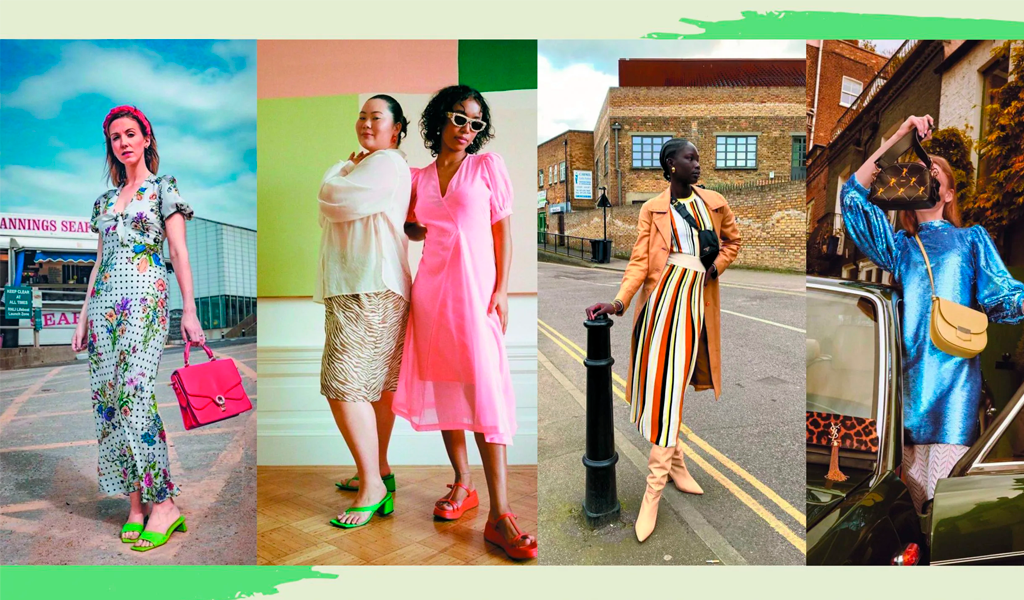
“Something that helped me over the years was diversifying where I sold,” says Naomi. “Mixing online with in-person events and markets was a great way to bridge the gap with local customers, move product, and make new connections.” In a pandemic year, in-person selling is more challenging, but there are many online channels where your ideal buyer may be hanging out.
Marketplaces and social selling channels
Shopify, Etsy or eBay? There are multiple online selling sites for vintage clothing brands, and the good news is that you don’t have to pick just one. Having your own dedicated website gives you full control over design, is helpful for reaching customers through organic search, and acts as a hub for your brand.
With Shopify, you can integrate with marketplaces like eBay and Etsy that have audiences seeking vintage items. Apps help sync your inventory across multiple sales channels. As you grow your own audience, you may decide to focus your attention. “Once we got a feel for the market on eBay, we just decided to move on to making our own website,” says Azeezat.
Consider also taking advantage of Shopify’s partnerships with Facebook and Instagram to surface your products on these social selling channels.
Selling locally
Seán and Oisín opted to sell only to customers in Ireland, where they say competition for vintage is low. If you choose to focus on selling vintage clothing locally to fill a gap in your own community, consider alternate delivery methods like curbside pickup and local delivery. Many brick-and-mortar retailers adopted these methods during pandemic shutdown, but this consumer trend has staying power through 2021.
When events start happening again, look for other opportunities to sell in person, from clothing and vintage markets to pop-up booths at festivals.
Key information to Include in your Listings
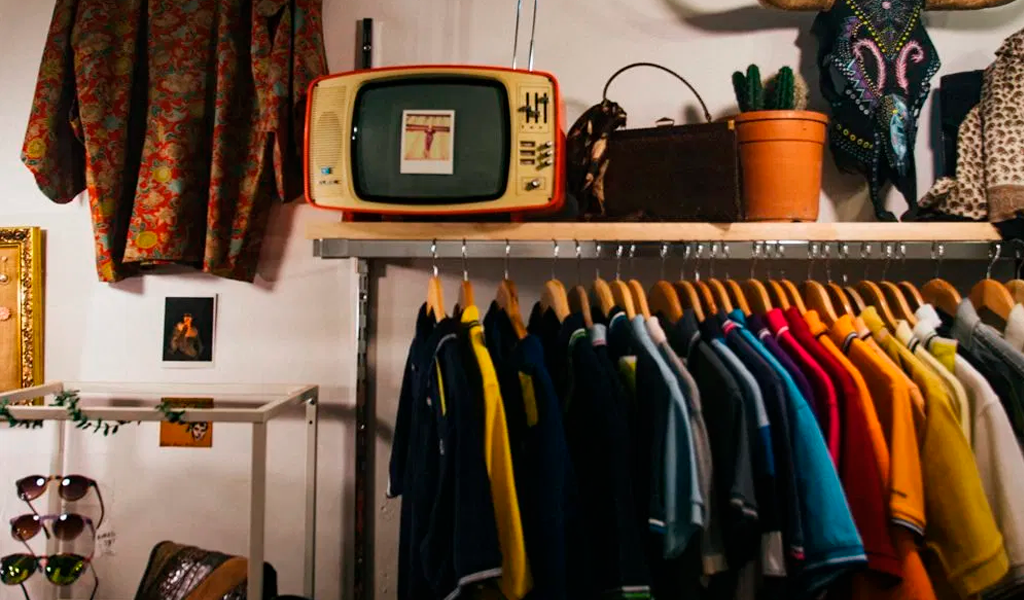
By giving potential buyers as much information as possible, you’ll make sales quicker and have to answer fewer questions that have the same answer. There’s only so many times you can answer the question ‘how long does shipping take?’ before you crack.
Stating the condition
Always make it really clear what the condition is and if there are any marks or flaws. Only a madman would buy an item of clothing that doesn’t mention the condition.
Sizing
Let people know the sizing on the label, and the size that you would recommend based on your own judgement. When it comes to vintage clothing sizing can really vary over the decades, so can even be useful to take measurements of the Pit to Pit and Shoulder to Bottom. This will help make quicker sales and receive fewer returns.
Explaining delivery practices
Let people know the shipping provider you use, because some providers can’t ship to some addresses. It’s also good to give people an approximate time frame of when they can expect to get their item.
Returns or no returns?
Choosing whether or not to offer returns is a true dilemma for every vintage clothing seller, especially when you’re just getting started out. Whilst stating that you have a no refunds or returns policy can reduce the number of refund requests you get, ultimately all the platforms have buyer protections in place that allow buyers to return an item they buy for a full refund within a certain time frame.
Final Thoughts
While there are some tricks and strategies that you have to figure out along the way, selling vintage clothing online can be a very lucrative and fun business. Knowing the pros and cons, how to source products, and finding your niche, will give you the best chances for success. If you’re new to the vintage scene and need a place to start, try out one of the most popular marketplaces.
I’m a product and graphic designer with 10-years background. Writing about branding, logo creation and business.

